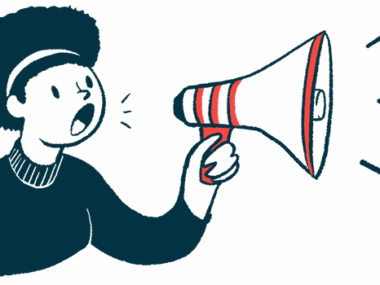Dravet syndrome treatment Zorevunersen sustains benefits
Data show seizure reductions, improvements in cognition, behavior measures
Written by |

Stoke Therapeutics’ zorevunersen, a treatment that addresses the genetic cause of Dravet syndrome, continues to reduce the frequency of seizures in children and adolescents who are taking part in Phase 1/2 clinical studies in the U.S. and the U.K., while also leading to improvements in cognition and behavior.
“Based on the data we have seen from our clinical studies of zorevunersen, we believe we have the potential to change the way this disease is treated by addressing the root cause of the disease, not just the symptoms,” Barry Ticho, MD, PhD, Stoke’s chief medical officer, said in a company press release.
Now that the U.S. Food and Drug Administration (FDA) has lifted a partial clinical hold on higher doses of zorevunersen, the company is working toward launching a planned Phase 3 registrational study that could support applications for the treatment’s approval.
The company has said it expects to wrap up discussions with regulators on how to best design a clinical protocol by the end of 2024.
“We look forward to continuing to work with Dravet syndrome leaders around the world to prepare for a Phase 3 registrational study of zorevunersen,” Ticho said.
Most people with Dravet syndrome carry mutations in one of the two copies of the SCN1A gene, which is required for nerve cells to send signals from one to another. While the other copy remains healthy, it doesn’t produce enough gene product to preserve normal function, causing seizures and other symptoms.
Addressing the root cause
Zorevunersen, previously known as STK-001, is designed to increase the activity of the healthy copy of the SCN1A gene so it can produce more of its gene product, making up for the disease-causing, mutated copy. This is expected to ease symptoms by addressing the root cause of Dravet syndrome.
In the U.S., zorevunersen is being tested in SWALLOWTAIL (NCT04740476), a long-term extension to a completed open-label Phase 1/2 study called MONARCH (NCT04442295). In the U.K., testing is ongoing in LONGWING (ISRCTN12811235), a long-term extension to the also completed ADMIRAL study (ISRCTN99651026).
In the MONARCH and ADMIRAL studies, 81 children and adolescents with a diagnosis of Dravet syndrome, ages 2-18, received single or multiple doses of up to 70 mg of zorevunersen on top of their standard anti-seizure medications.
Most patients (85%) took at least three anti-seizure medications, and nearly half (49.4%) were on Fintepla (fenfluramine), an approved add-on medication for Dravet syndrome. Despite being on the “best available” anti-seizure medications, patients experienced a median of 17 seizures per 28 days prior to entry to the studies, researchers said in their presentation at the 15th European Epilepsy Congress (EEC), which took place Sept. 7-11 in Rome.
As reported previously, treatment with 70 mg of zorevunersen resulted in a median 57% reduction in the frequency of seizures at six months after a single dose. Data from the ADMIRAL study showed that multiple dosing resulted in a median 85% reduction at three months and 74% at six months after the last dose.
These “data support a potential 70 mg loading dose regimen in a registrational study,” the researchers wrote.
Multiple doses of zorevunersen (30mg, 45mg, or 70mg) also resulted in improvements in communication, personal and coping skills, as well as improved gross and fine motor skills, at 36 weeks, or about eight months. These “improvements are in stark contrast to natural history data,” the researchers wrote.
Single and multiple doses of zorevunersen up to 70 mg were well tolerated, with 24 (29.6%) experiencing side effects possibly related to zorevunersen, including one patient who experienced an unexpected, serious side effect. None of the side effects led to withdrawal from the studies.
‘Substantial improvements’ in ‘multiple measures’
One-year data, presented in a poster at EEC 2024, showed that zorevunersen also continued to reduce the frequency of seizures, with greater reduction observed in three patients who received multiple doses of 70 mg in MONARCH or ADMIRAL, followed by a single dose of 45 mg in the extension study.
“Substantial improvements were detected in multiple measures of cognition, behavior, and overall clinical status,” the researchers wrote. The data support zorevunersen’s potential as the first disease-modifying treatment for Dravet syndrome, they wrote.
Of the 68 patients who entered SWALLOWTAIL or LONGWING, 15 have been treated for two years or longer with up to 10 doses. Zorevunersen continues to be safe, with mostly mild to moderate side effects. Protein elevation in the cerebrospinal fluid, that which surrounds the brain and spinal cord, occurred in 50 (74%) patients but resulted in no clinical manifestations.
Researchers also presented data from a two-year natural history study, called BUTTERFLY, showing that despite treatment with standard-of-care antiseizure medications, development of children and adolescents with Dravet syndrome ages 2-18 “generally plateaued with a widening developmental gap over time,” the researchers wrote.
“Our natural history study makes a compelling case that current treatments are insufficient to address the needs of patients with Dravet syndrome because patients still have high seizure rates and plateau in their neurodevelopment,” Ticho said.








